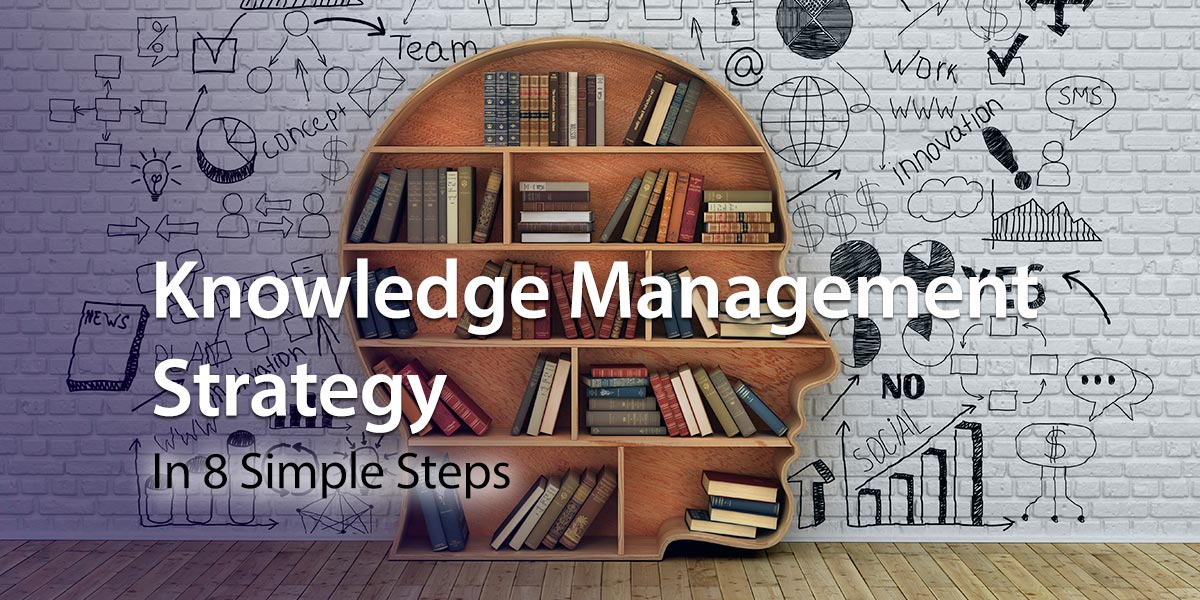Drawing up an internal communication strategy for your company can feel daunting, right? After all, there’s a lot at stake. Get it right, and you will have an engaged, invested workforce aligned to meet company goals. Get it wrong, and your employees could feel disconnected and disinterested in their roles. Remote, hybrid, and deskless workers have complicated the communications landscape even more. You have to work harder to build personal connections and engage employees when they’re no longer in the same building.
Nowadays, business leaders rightly put great importance – and investment – in getting their internal communications in order. And there’s no better place to start than an employee communication plan. A great internal communication strategy informs and engages employees. And it also powers up productivity by ensuring everyone is aligned with the company mission and business objectives.
Ready to get started? Here are 15 best practices to help you develop an internal communication strategy that delivers results.
What Is Internal Communication?
Before we get stuck into developing an internal communications plan, we need to understand the basics. And a definition is the perfect starting point.
Internal communications refers to the exchange of information within an organization. Let’s be clear – it’s not just about sharing company news. Sure, it’s about keeping employees informed. However, it’s also about engaging employees and creating a shared company vision to achieve business objectives.
Moreover, according to the Grammarly Harris Poll State of Business Communication report, 72 percent of leaders say good communication increases productivity. Furthermore, engaged employees are less likely to leave their jobs than disengaged workers.
Make no mistake. Your internal communication plan will have far-reaching impacts.
What Are The Four Types Of Internal Communication?
Effective internal communication can be broken down into four main types. Let’s take a closer look.
Management To Employee Comms
Messages from leadership are all about communicating vital business issues. This type of strategic internal communications includes company news, vision, business strategy, recognition, and feedback.
Employee-Up Communication
Two-way communication allows employees to share their insights, feedback, concerns, and suggestions with leaders.
Peer-To-Peer Internal Communications
This covers messaging between coworkers and teams. It’s essential for collaboration, problem-solving, project management, and innovation.
Crisis Or Change Communication
The final type of internal communication includes updates, guidance, and support on crises like fires or natural disasters. And it’s also relevant when an organization is undergoing change, such as a restructuring or acquisition.
Different Communication Types
In addition to the four types of internal communication, there are four main ways in which we communicate. It’s essential to consider the following when developing your internal communications strategy:
Verbal Communication
Whether in meetings, 1:1s, presentations, or phone calls, we communicate by speaking to each other.
Non-Verbal Communication
Often underestimated, our body language, gestures, and facial expressions speak volumes.
Visual
Diagrams, infographics, videos, charts, and graphs convey information often more effectively than other types of communication.
Written
Text is still the mainstay of internal communication toolkits. Examples here include emails, chats, reports, policies, and procedures.
What Are The Goals Of An Internal Comms Strategy?
Each organization will have different aims and objectives for its internal communication plan. However, here are some of the headline goals:
- Ensure employees stay in tune with the company’s mission and values.
- Promote transparency and employee engagement.
- Enhance collaboration and knowledge sharing between teams and departments.
- Make sure workers stay ahead of company news, updates, and business goals.
- Build trust in the workplace, empower workers, and ensure alignment with company objectives.
A strategy sets out the blueprint for achieving your objectives. It makes the task of internal communication planning more manageable.
Some companies engage communication professionals to help them get there. However, developing a powerful internal communications strategy is possible without external help.
Whether creating a new internal communications strategy or revising an existing plan, just follow our 15 best practice tips.
How Do You Develop An Internal Communication Strategy?
1. Review Your Internal Communication
The first step is to assess your current position. Setting a baseline gives you a strong sense of where you are and where you want to be. It’s also the starting point for measuring the impact of your internal communications planning.
Ask yourself the following questions to determine the baseline in your company:
- How are we communicating internally?
- What communication channels are currently working for you?
- How do employees like to receive information?
- Which communications channels prompt the most action from employees?
- What initiatives performed the best, and why were they more successful?
2. Consult With Workers
Researching the answers to these questions involves inviting feedback from senior management and coworkers. Use the intranet to set up a company survey on internal communication. Ask for suggestions, communication preferences, and whether staff can share positive experiences from their previous employers. Dig deeper by holding a series of focus groups for more detailed employee feedback and insights.
Internal communication is a key driver for employee engagement. And so, it’s worth spending time and effort on this vital step.
3. Set Up An Internal Communications Team
We all know that two heads are better than one. A cross-departmental team means you have the help and support you need. And it also ensures you have a wide range of perspectives feeding into the process.
And when it comes to advocating for internal communication, you will have a ready-made set of champions. The team can fly the internal communications flag for you on the frontline.
Furthermore, it’s a great way to get buy-in from the entire organization. Rather than a top-down approach, a collaborative one that involves a cross-section of employees is more likely to gain acceptance.
4. Determine Your Target Audiences For Internal Communication
The next step in developing strategic communication plans is identifying your internal audiences.
Your employees are a diverse group with individual preferences and needs. Don’t make the mistake of stereotyping your people by thinking, ‘We know our employees.’
The critical audiences for internal communication will vary from company to company. However, they are likely to include the following:
- Full-time vs. part-time employees
- Remote workers
- Corporate office staff
- On-the-road technicians
- Sales, manufacturing, and operational staff
- Multi-generations – Baby Boomers, Gen X, and Millennials
Once you have identified your target audiences, consider their likes, dislikes, and preferences on communication methods. In addition, explore what platforms they use to access information. For example, field technicians will likely mainly use mobile devices, whereas corporate staff will probably use the intranet. Younger employees prefer internal social media, while older employees want face-to-face contact.
Best practices suggest multiple communication channels are needed to satisfy the diverse needs of today’s workers. That way, you end up with an effective internal communications strategy.
5. Identify The Objectives For The New Internal Communication Strategy
It’s now time to consider what the overall objective is for the internal comms strategy. For some businesses, it will be to improve customer service. For others, it may be to increase employee engagement. Or perhaps you want to improve employee satisfaction and build company culture.
Whatever the case, an overall objective provides a clear sense of direction. And remember, the goal may change over time. The priority this year may be company culture. However, next year, it could be increasing employee retention rates.
6. Agree An Internal Communication Strategy Template
A clear framework provides a focus for activities and a smart way to structure your strategy. You may want to include some or all of the following key elements:
- An assessment of the current situation
- Overall business goals
- Specific communication goals
- Target audiences
- Core messages
- Internal communication channels
- Communication best practices for your company
- Responsibility for delivery
- Key performance indicators
- Communications calendar
Similarly, there is no ideal length. However, tempting though it is, try not to be too ambitious. Focusing on a few key initiatives is more likely to lead to internal communications success.
7. Set A Budget For The Internal Communication Plan
Setting a budget before you get into the details is always a good idea. Thankfully, internal communication is now regarded as a business-critical strategy. It deserves to have cross-departmental support. Knowing the funds and resources available to deliver the internal communication strategy will help you prioritize the deliverables. And like every other business investment, establish measurable outcomes to prove ROI.
8. Develop Your Targets
Armed with a budget and overall objective, now it’s time to develop your messages and communications initiatives. There are several tools you can use to help you set targets. A SWOT analysis and SMART criteria are two well-known tools. We like to use the 5Ws and an H. This approach involves asking a set of questions to gather information and problem-solve.
- What: What needs to happen? What’s in it for me? What do I need to know?
- Why: Why now? Why is it important? Why is this the right thing to do?
- Where: Where can I get more information? Where will the impact of this decision be felt?
- When: When does this need to happen? When are the key milestones and deliverables due?
- Who: Who is responsible for making the decision? Who is in charge of delivery? Who will be impacted?
- How: How has the decision been made? How will it be implemented? How will employee communication be affected?
Remember to keep it simple and be selective. Trying to achieve too much too quickly can be counterproductive.
9. Be Inclusive
To really make a difference, your plan should be relevant to every employee in the company. As we have seen, staff members have differing needs, challenges, and preferences. Carefully consider your target audiences, key messages, and the most appropriate channels for dissemination. And then use a variety of media to tick as many boxes as possible:
- Targeted newsletters
- Videos
- Podcasts
- Wikis
- Social media
- Printed media such as flyers and posters
For example, a healthcare provider with workers visiting patients may want to use SMS or mobile apps.
Furthermore, make sure your communications are appropriate for those with visual, auditory or cognitive special needs. And if you operate in multiple countries, translation may also need to be factored in.
10. Encourage Two-Way Communication
Effective communication isn’t just about top-down messages. The best strategies are those that also include bottom-up and cross-departmental two-way channels. Increasingly, employees expect to be able to respond to information, contribute insights, and provide feedback.
A survey from Salesforce found that employees who have an organizational voice are 4.6 times more likely to feel empowered to perform their best work. From intranet forums and company blogs to staff suggestion schemes, include those all-important two-way channels.
11. Make Room For Water Cooler Conversations
Equally important are channels for casual communication. A conversation at the water cooler has sparked many a great initiative. Rather than trying to stifle casual conversation, find ways to encourage it. This is even more important for companies with lots of remote or non-desk personnel.
Informal communication helps to build a sense of camaraderie and connection between workers. Alongside boosting morale, it also improves the idea-sharing and problem-solving capabilities within the business.
12. Share Your Internal Communication Strategy
Once your strategy has been finalized, it’s time to tell everyone about it. Senior managers, key stakeholders, frontline staff – the entire team needs to know about the strategy and what it means for them. Your people will be interested in the ‘why’ behind the new plan. And they need to have the ‘what’s in it for me question’ answered.
Publish the plan on the intranet. Get the CEO to introduce the plan in person (or via a video message). Showcase the internal communication strategy in your weekly staff newsletter. Whatever channels you choose, communicating the internal comms strategy should be as high a priority as the initiatives within. This way, the whole organization is accountable for successful internal communications.
13. Create A Communications Calendar
Another way to ensure accountability is by developing an internal communication calendar. This makes it easy for employees to see at a glance what’s in the pipeline and when.
You can showcase internal communication initiatives in a quarterly, monthly, or weekly format alongside details of who is responsible for delivery. Incorporate into the intranet’s company calendar for a comprehensive overview of all events, launches, meetings, and deadlines.
14. Develop Review Mechanisms
All the best internal communication strategies are living documents. They are not created and then just filed away as a job done. Make sure you include robust review mechanisms. As a minimum, the internal communication team must be on top of progress. Scrutiny and challenge are necessary to ensure targets are met, and expectations are exceeded. Senior managers and the board will want to review the strategy at least quarterly.
It also provides an opportunity to ensure that external and internal communication strategies are complementary. Consistency regarding tone, focus, and message between the two plans is essential. There’s nothing worse than employees finding a conflicting message on your external social media platforms. It undermines the trust and goodwill necessary for effective employee-employer relationships.
And don’t forget to report back to the workforce regularly. Employees have a vested interest in how things are going, so keep an ongoing dialogue in place.
15. Measure Success
Our final tip is to list how you will measure the success of the internal communications plan. Ideally, the key performance indicators you use should relate to the objectives you set in step five. Use tracking and analytics tools to help you assess what’s working and, perhaps more importantly, what’s not working. Possible measures of success include the following:
- Improved engagement score on the annual employee survey
- Increased employee retention rates
- Better staff reviews and scores on Glassdoor and LinkedIn
- Positive snap polls or surveys
- Feedback forms from specific events.
Act on what the data is telling you. Look for other ways to incorporate review mechanisms – such as individual staff reviews – and adjust your internal communication strategy accordingly.
IC Strategy for CMS Intranets
CMS intranets are a great platform for improving internal communications. In fact, for many organizations this is the driving force for setting up an office intranet in the first place. All you need to do is post all the company news and updates on the intranet and hey presto all your communication problems are solved, right? Well, actually that’s only half the story. There’s no doubt that disseminating company information is much easier on the intranet; however, the capabilities of the intranet go far beyond simple dissemination. Those companies that focus on this aspect alone are missing out on another important capability of the intranet and that is the development of two-way conversations with staff. In this article we look at the importance of internal communications generally and how the CMS intranet can help your organization develop two-way conversations internally.
Why Internal Communications Is Important

In fact, communications is one of the key drivers behind employee engagement. Engaged employees tend to be happier and more productive employees and they also have lower rates of absenteeism and sickness. So from an organizational point of view, investing in internal communications is a necessity.
As companies grow in size, the process of internal communications can become very convoluted and time-consuming. There’s also the danger of key corporate messages becoming corrupted as they go down the lines of communication from senior managers. Furthermore, the opportunities for staff to feedback to management are often very limited which makes communication a one-way process only.
An intranet can help with all those issues. As well as being an efficient disseminator of information, the intranet also enables those all-important two-way conversations with staff members.
Let’s look in detail now at how the CMS intranet can improve internal communications.
Providing A News Platform

To be as effective as possible though there are some important things you need to remember about the news feed. These include the following.
Make it engaging: even the most exciting news can become boring if it is conveyed using stilted or dull language. Creating engaging news posts is certainly a skill, but a well-crafted news item will have much more impact and so it’s a skill well worth investing in.
Keep it concise: the news feed should be just a digest of news rather than an in-depth analysis. Keep the messages short and succinct for greater impact. If employees need or want to know more, then have a link to a detailed article that they can click on.
Stick to important news: don’t be tempted to overload employees with news items as that will make it hard for them to discern what’s truly important. Too many news items give your intranet a cluttered and congested feel and make it difficult for staff to navigate and locate what they really need. So before posting any news ask yourself ‘is this critical information?’
Think outside the box: by definition, your intranet news feed will primarily be focussed on the company. However, the world of commerce is vast and so don’t forget about external news and opportunities. These could be industry events or conferences or staff enrichment opportunities that as well as impacting on employee engagement, will also provide opportunities to expose your brand to a wider audience with staff members acting as ambassadors for your organization.
Two-Way Communication
Your intranet software will allow employees to comment on news feeds or to share content and stories. In addition, staff members can be invited to share their feedback in other ways, for example, in a blog from the CEO or president on the company’s performance and the achievement of objectives. In this way, internal communication moves away from being all about the company to being more about employees’ interaction and experiences within the company. Soliciting feedback from staff will not only improve internal communications, it will also have positive impacts on staff morale and levels of engagement.
Breaking Down Team Silos

Another way that the CMS intranet can help to break down team silos is by encouraging the identification of company subject experts. These experts can share their knowledge and insights through a range of media including blogs, videos or frequently asked questions. Other teams and departments will learn about what their colleagues are doing, developing a better appreciation of their contribution to the overall objectives of the business.
In a similar way, a staff directory on the intranet will help to develop connections between staff and at a basic level facilitates communication by enabling staff to put a face to a name. Including short biographies that highlight areas of expertise and current projects will take this to another level. Staff will be able to connect with others that are tackling similar issues or that have useful skills to share.
Moreover, collaborative workspaces on the intranet will enable staff across the organization to collaborate on projects and tasks. They will be able to share documents, pertinent data and can have multiple conversations all within one central hub.
Connecting And Linking With CMS Intranets

Is internal communication an issue in your organization? Contact the team at MyHub for a free demonstration and see for yourself what a difference a CMS can make.
Internal Communication Strategy: Plan To Succeed
Effective communication is what makes the difference when it comes to business success. It’s no accident that those companies with strong internal communications strategies tend to be the highest-performing ones overall. According to one survey, an empowered office environment can increase worker productivity by 25 percent.
So, if you want to improve internal communication in your business, a strategy is mission-critical. A strong internal communications strategy means you can plan to succeed. And not just with increased productivity but also with improved morale and positive company culture.
Use our 15 tips on communication best practices, and you’re on the way to creating a successful internal communication plan.
The Best Internal Communications Strategy – Final Thoughts
Properly developed internal communications strategies within your business have a huge impact on your business’s ability to function smoothly. When internal communications strategies are well thought out, employees throughout the business have a better idea of their standing within the company, clearer definitions of their expectations, and higher levels of productivity. People are more likely to ask for help when they need it, communicate problems when they arise, and work with others to achieve solutions when necessary when they know how the communications process works. If you want to streamline internal communications within in your business, you want to make sure you aren’t missing any of these key details.
Mobile Functionality

Get faster answers from employees on the road. If they can’t access the company intranet from their mobile devices, they can’t keep up with important announcements or respond to questions or other communications posed through the intranet.
Increase productivity on the road. Do you have employees who perform the majority of their work outside the office? Are employees allowed to work from home, even on a part-time basis? What about business trips, when employees will be even further away from the office? Easy access to the intranet through mobile devices will streamline productivity for employees no matter where they might be.
Support the bring your own device trend. Many employees prefer to work from their own devices. Whether it’s a tablet that uses their preferred platform or their preferred cell phone instead of one provided by an employer, they’re bringing their own devices to the office–and they’d rather use them. While some professionals question whether or not this trend will continue long-term, in the present moment, it’s evident that it’s the preferred choice for many employees. It’s also a trend that will improve productivity, as employees who are familiar with their existing device will be able to use it more smoothly.
Visual Tools

Think about the message you’re trying to convey first. You shouldn’t put up images just for the sake of putting up images. Instead, you need to use images to make a clear, specific point. Develop that point before you start working on the image. Decide what you want people to remember about it.
Be humorous when possible. Even a little bit of a corny joke is a great way to make those key pieces of information stick out in the minds of your employees. When you make them laugh, you engage them more deeply with your image. That makes it more likely that they’ll remember it later.
Keep it simple. The best images aren’t the most complicated ones. Instead, they’re the ones that clearly convey your precise message in a way that will be remembered later, but without excessive details that will take away from your intended message.
By The Numbers

It’s also critical to keep track of your internal communications statistics. You should identify the important elements that you want to track: for example, how engaged are your employees? How many of them are actually using the company intranet? How many of them are satisfied in their current position? When you measure the success of your internal communications strategies, you’re better able to improve that communication and enhance employee engagement and productivity throughout the company.
Employee Thoughts Matter
When it comes to internal communications, it’s not just about providing employees with access to critical documents and information or offering them the openings they need to communicate with one another. It’s also about letting employees know that their opinions matter. Keeping the lines of communication open keeps employees engaged with their jobs, their supervisors, and the business as a whole. Giving employees a voice can take on several forms. You can conduct surveys, keep an open email account or even suggestion box for employee feedback, or even create a forum on the company intranet to make it easier for employees to share their thoughts, opinions, and ideas.

Your company intranet is an excellent tool for enhancing employee engagement and improving your internal communications strategies. When your intranet is used to its full advantage, particularly when you’re careful to balance all the important facets of internal communications, you’ll discover that your entire business runs more smoothly. If you’re ready to develop an intranet that will allow you to use visuals to enhance employee memory, track employee statistics, maintain mobile functionality, and let employees know that their thoughts and opinions matter, contact us! We’ll provide you with a cloud-based intranet that will take care of all your internal communications needs.
About MyHub
Interested in finding out more? Check out the MyHub Intranet blog for more information on how a company intranet can improve employee communication. Sign up for a free demo or our no-obligation 14-day trial and discover just what a difference an intranet can make.











